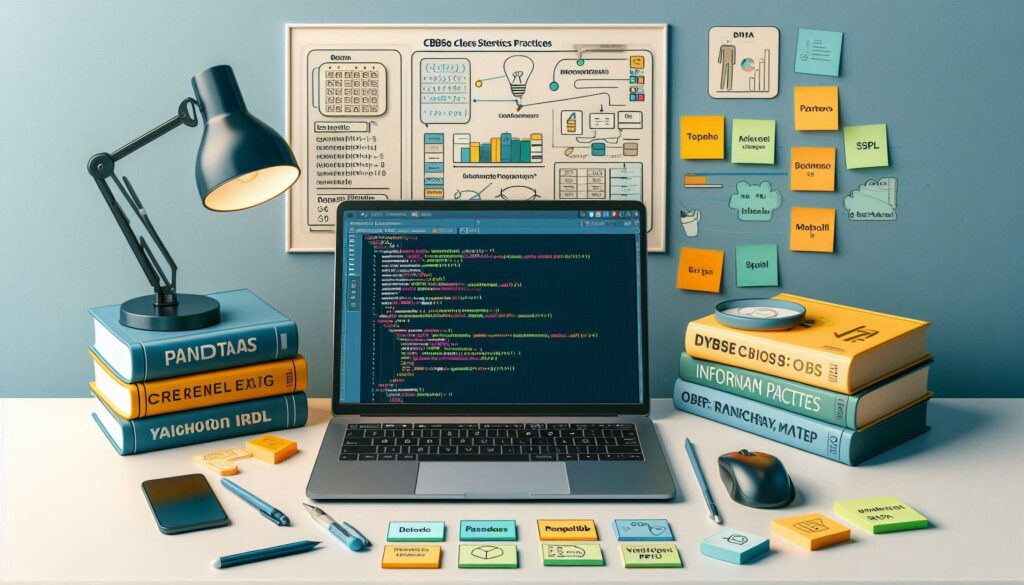Chapter 5: Introduction to Computer Networks | CBSE Class 12 IP Revision Notes by Itxperts

Understanding the basics of computer networks is essential for Class 12 students, especially when preparing for the CBSE Informatics Practices exam. In this chapter, we explore the fundamentals of networking, types of networks, topologies, and key protocols that make communication across devices possible. Let’s break down these concepts to help you revise effectively.
1. What is a Computer Network?
A computer network is a collection of interconnected devices (computers, servers, etc.) that communicate with each other to share resources like data, software, or hardware. The primary purpose of networking is to allow users to access information and resources efficiently.
2. Types of Networks
Different types of networks cater to different geographical areas and user needs. Here are the primary types:
- LAN (Local Area Network):
- Connects devices within a limited area, like a home, office, or school.
- Provides high-speed data transfer, typically through Ethernet or Wi-Fi.
- Example: Computers connected within a school’s computer lab.
- WAN (Wide Area Network):
- Spans a larger geographic area, like cities, countries, or even globally.
- Often connects multiple LANs using routers and public infrastructure.
- Example: The internet is the largest WAN.
- MAN (Metropolitan Area Network):
- Covers a city or a large campus.
- Often used by businesses and government institutions to connect multiple buildings.
- Example: Citywide Wi-Fi networks.
3. Network Topologies
The topology of a network refers to how its components are arranged and interconnected. Common topologies include:
- Bus Topology:
- All devices are connected to a single central cable (bus).
- Easy to set up but can be slow if many devices use the network simultaneously.
- Star Topology:
- All devices connect to a central hub or switch.
- More reliable since the failure of one device won’t affect others.
- Ring Topology:
- Devices are connected in a circular layout.
- Data travels in one direction, reducing the chance of collisions but making the network vulnerable if one device fails.
- Mesh Topology:
- Every device is connected to every other device.
- Provides high redundancy and reliability but is complex and expensive.
- Tree Topology:
- A hierarchical combination of star and bus topologies.
- Suitable for large networks like universities or corporate buildings.
4. Network Protocols
Protocols are rules that govern how data is transmitted and received across networks. Here are some key protocols:
- HTTP (HyperText Transfer Protocol):
- Used to transfer web pages over the internet.
- It is the foundation of data communication on the World Wide Web.
- FTP (File Transfer Protocol):
- Used to transfer files between a client and a server.
- Commonly used to upload or download files to/from a website.
- SMTP (Simple Mail Transfer Protocol):
- Used to send emails from an email client to a mail server.
- It ensures that messages are delivered correctly across email networks.
5. Advantages of Computer Networks
Understanding the benefits of networking can help students realize its importance in real-world applications. Key advantages include:
- Resource Sharing: Hardware (printers, scanners) and software can be shared across devices.
- Data Accessibility: Users can access files and applications from any device connected to the network.
- Centralized Management: Easier to manage and monitor resources, data, and security in one place.
- Cost Efficiency: Saves money by sharing resources instead of duplicating them across every device.
6. Common Network Devices
- Router: Directs data traffic between different networks, often between LANs and WANs.
- Switch: Connects multiple devices within a LAN and facilitates data transfer between them.
- Modem: Converts digital data from a computer into signals that can be transmitted over phone lines, and vice versa.
Conclusion
This chapter introduces the fundamental concepts of computer networks, which are crucial for understanding how devices communicate and share resources. From learning about the types of networks and topologies to grasping the importance of protocols like HTTP, FTP, and SMTP, these concepts form the backbone of modern digital communication. Make sure to practice questions related to these topics to solidify your understanding before the exam.
Stay tuned with ITxperts for more quick revision notes and expert tips to help you ace your CBSE 12th IP exams!

